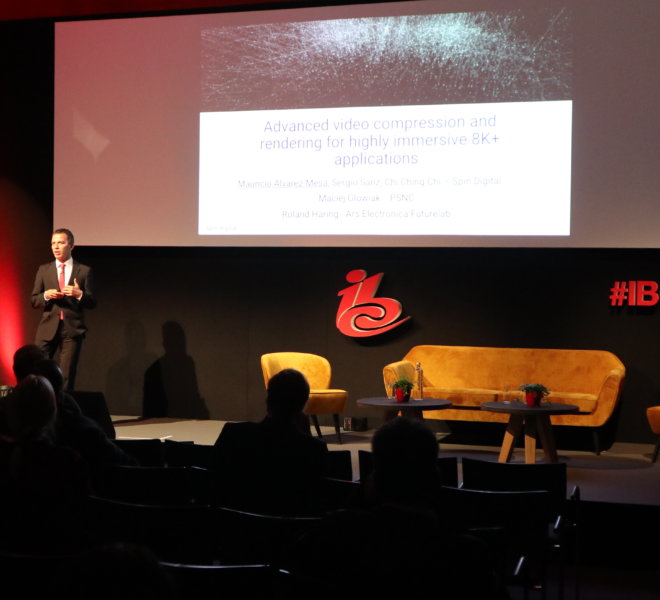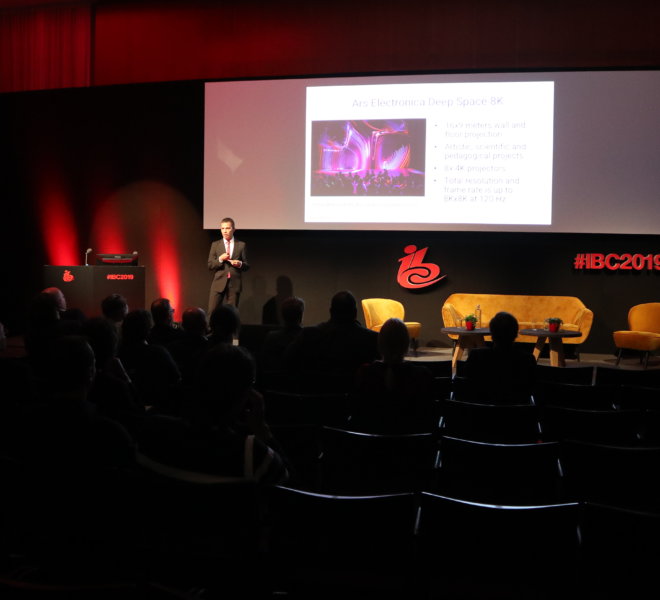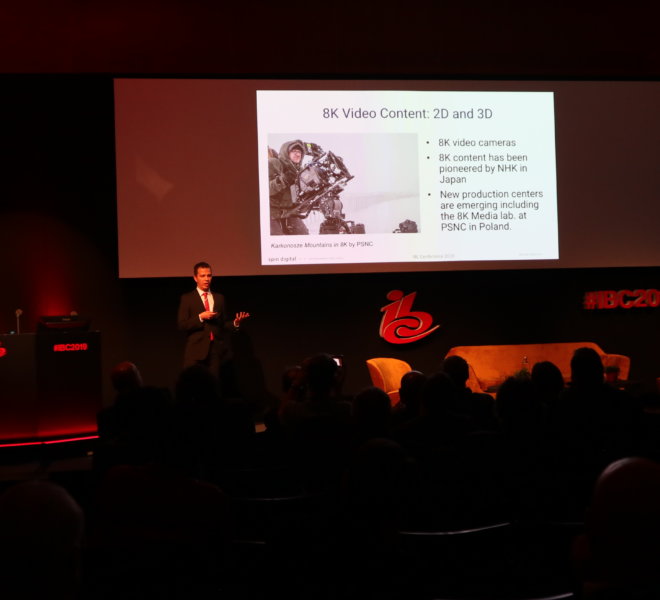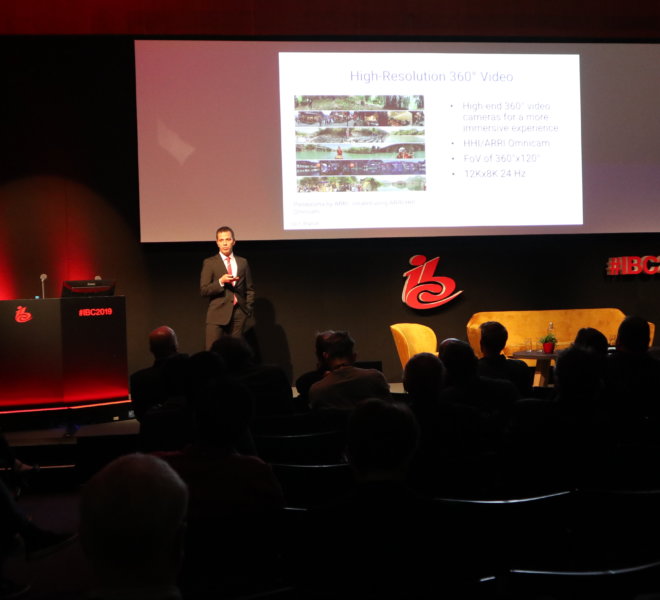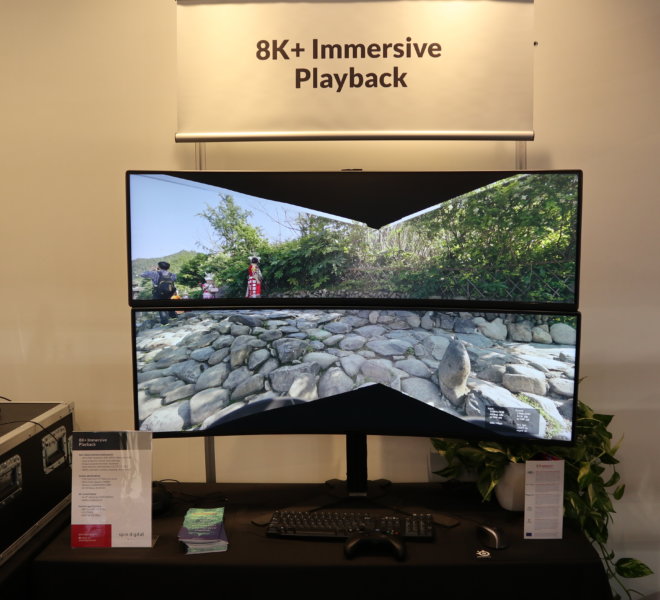Scientific paper: Advanced Video Compression and Rendering for Highly Immersive 8K+ Applications
Published: 7 October 2019
Authors
Mauricio Alvarez-Mesa, Sergio Sanz-Rodríguez, Chi Ching Chi
Spin Digital Video Technologies GmbH, Germany
Maciej Glowiak
PSNC – Poznan Supercomputing and Networking Center, Poland
Roland Haring
Ars Electronica Futurelab, Austria
Abstract
In this article we present a set of tools designed to simplify the distribution, playback, and adaptation of high-quality immersive content for new immersive environments. The tools are based on a high-performance HEVC codec that allows to encode, decode, and play ultra-high-resolution video in 8K and 16K resolutions using standard computing systems. In addition, a flexible video rendering engine allows to adapt the content to different output display environments. The new tools have been validated in two advanced immersive installations, and using new immersive content created with different techniques (8K camera, 3D CGI, and point clouds) that has been produced in the context of the Immersify European Project. Initial results show that the new tools enable ultra-high-resolution immersive video playback, and first evaluations indicate that a better immersive experience for final users can be achieved, while at the same time using a simpler workflow.
Introduction
Significant advances in content production technologies, video compression, rendering, and displaying are enabling the creation of a new generation of immersive environments able to exhibit media with an unprecedented level of quality and offering a much stronger sensation of reality.
This kind of environment requires video in ultra-high resolution (including 8K and beyond), 360° and 3D video, high frame rate, and professional color formats, Sugawara and Masaoka. As a consequence, the uncompressed video results in huge data rates that must be distributed using advanced video codecs.
In addition, the emerging immersive environments are by design very heterogeneous, including among others: large screen visualization systems with flat and curved screens, dome projection, and cylindrical and cubic caves with large field-of-view (FoV) capabilities.
Currently, video content has to be produced for a specific target environment using distinct workflows and playback tools. This makes the production of immersive content non-reusable across different environments or increases the production costs for multi-environment productions.
In order to overcome this barrier, a set of tools has been developed where a single version of an immersive video production can be used across different environments.
All three, tools, content, and environments, have been designed and improved in an integrated approach as described in Figure 1:
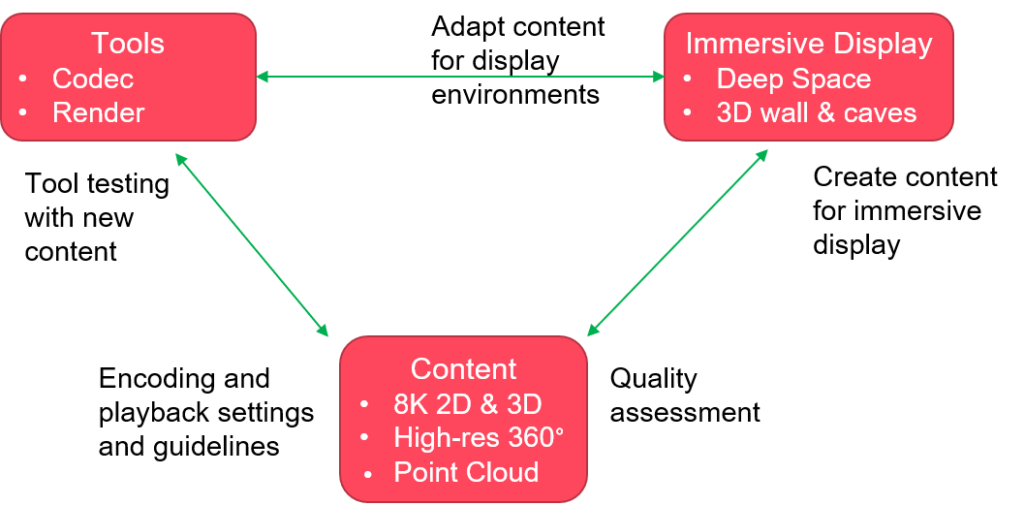
The new software has been validated on two immersive environments: The Deep Space 8K at Ars Electronica Center in Linz (Austria), and the 8K 3D video wall at the Poznan Supercomputing and Networking Center in Poznan (Poland).
Moreover, in order to test the new tools in the new environments, experimental content has been produced in 8K+ resolution using very recent technologies in media acquisition such as 8K 2D and 3D camera footage, high-resolution 360° video, time-lapse photography, cinematic rendering, as well as point cloud rendering of laser scanning.
Download the complete article in PDF from the IBC 365 website

